georgiagirl23
Greenie
Good Afternoon to all! I'm knew to prospecting/rockhounding and need some help with identification. I have an area that I started digging recently because it was sinking in and a crack on the surface of the ground started to form. I continued to dig because I came across soil that was not the typical Georgia red clay I usually see. This soil has a lot of yellow-gold color, metallic like flakes that make everything shine, some gray to white clay (clumps), yellow-sandy like dirt (does not clump), red clay, and brown dirt, and also these rock-like clumps that are mostly assorted layers of colors when broken. I have attached pics of the soil in the hole and a couple of rocks I have found. I am located in the western part of the Georgia gold belt and gold has been found within a 5 mile radius of where I am digging. I think there may have been a stream in this immediate area SEVERAL hundred years ago, but I do not know how to determine that. I am not necessarily looking for gold, just curious as to what I can find.
Is this hole or the rocks in it worth pursuing? Should I try a different area? There are various shades of quartz rock all over here. I have heard the phrase 'the redder the better' and to look for iron staining, but everything here has red or iron staining bc of Georgia red clay.
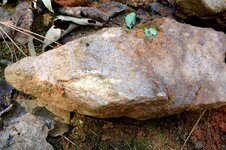
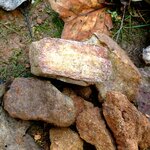
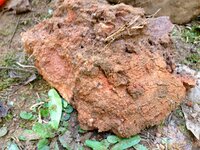
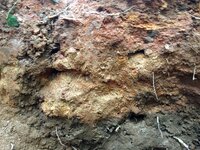
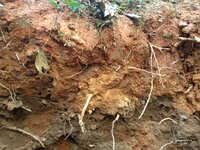
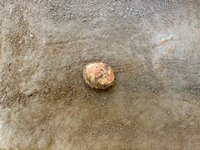
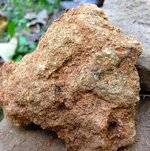
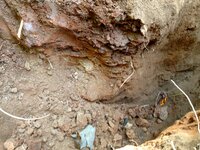
Is this hole or the rocks in it worth pursuing? Should I try a different area? There are various shades of quartz rock all over here. I have heard the phrase 'the redder the better' and to look for iron staining, but everything here has red or iron staining bc of Georgia red clay.










 Most likely your seeing decomposed granites which are common for the area from what I see. Pan out some material and you may be surprised. As to the subsidence it could be a sinkhole or collapse of a stream so keep a weather eye out. Some areas of subsidence are due to lowering water tables and if you walk around a bit you may find other areas that have sheered.
Most likely your seeing decomposed granites which are common for the area from what I see. Pan out some material and you may be surprised. As to the subsidence it could be a sinkhole or collapse of a stream so keep a weather eye out. Some areas of subsidence are due to lowering water tables and if you walk around a bit you may find other areas that have sheered.
